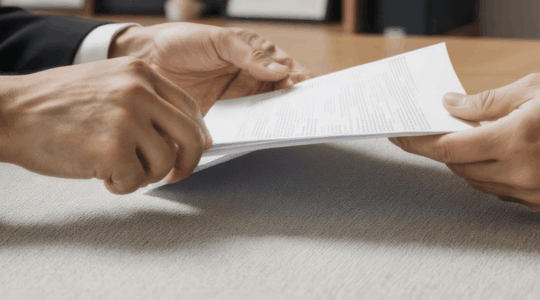Global Risk
Managing Pollution Hazards: A Global Perspective
International environmental frameworks offer guidance, but enforcement gaps mean organizations must take proactive steps to protect themselves.
September 24, 2025
In today’s interconnected world, pollution hazards and environmental risks are no longer confined to local jurisdictions. From oil spills that cross borders to microplastics that infiltrate global ecosystems, the need for a comprehensive, globally informed risk management strategy has never been more urgent. Organizations must better understand and manage pollution liability through a global lens.
Why Global Context Matters
Environmental risks are inherently transboundary. Whether it’s air pollution drifting across borders or marine contamination spreading through international waters, the impact of pollution often extends far beyond the point of origin. Organizations must consider not only their local regulatory environment but also the broader international context in which they operate.
Consider these real-world examples:
Black Sea Oil Spill
In December 2024, the Russian ships Volgoneft 239 and Volgoneft 212 encountered severe weather in the Kerch Strait, a critical waterway connecting the Black Sea to the Sea of Azov. One ship ran aground while the other broke apart and sank, releasing over 5,000 tons of heavy-grade M100 oil. The spill contaminated coastal areas in Russia, Ukraine, Romania, Bulgaria, and Turkey, causing extensive damage to marine life and ecosystems.
Despite international concern, the response was fragmented. Russia’s limited transparency and lack of coordinated cleanup efforts highlighted the challenges of enforcing environmental accountability across borders. The International Maritime Organization was called in to conduct an independent study, but results remain pending. Meanwhile, the privately owned ships face lawsuits, and cleanup costs are estimated at $300 million—far exceeding the $30 million pollution coverage each vessel carried.
Microplastics Buildup
Microplastics, tiny plastic particles less than 5mm in size, are accumulating in oceans worldwide, posing risks to marine life and potentially human health. These particles originate from the breakdown of larger plastics, synthetic fibers, and personal care products. They are small enough to be ingested by zooplankton, entering the food chain and releasing harmful chemicals.
Despite growing awareness, there is no single global authority regulating microplastics. Organizations like the United Nations Environment Programme and the UN General Assembly are working on treaties, but enforcement remains elusive. Without unified regulations or agreed-upon remedies, managing this exposure is extremely difficult.
Cross-Border Air Pollution
Air pollution is another global concern. According to the World Health Organization, 6.7 million people died in 2019 due to air pollution exposure. While countries like the U.S., Saudi Arabia, and Chile show high levels of nitrogen dioxide due to fossil fuel use, nations like India and China rank highest in particulate matter concentrations.
Who Globally Enforces Pollution Accountability?
Each country sets its own pollution standards. Globally, numerous attempts have been made to create guidelines, agreements and treaties. Here are just a few:
- Paris Agreement (2015): This legally binding treaty focuses on climate change, emphasizing transparency and emissions measurement.
- Convention on Long-Range Transboundary Air Pollution: This agreement aims to protect human health through strategies to reduce air pollution and share technologies.
- United Nations Convention on the Law of the Sea: This initiative provides a framework for maritime activities, including environmental protections.
- Basel Convention: This global agreement regulates the movement of hazardous waste across borders.
- EU Green Deal: This policy initiative targets carbon neutrality in Europe by 2050.
- Corporate Sustainability Reporting Directive: This EU law mandates environmental, social, and governance reporting for qualifying organizations.
While these initiatives offer direction, they lack enforcement mechanisms. Countries not in compliance are rarely held accountable, leaving organizations to navigate a complex and often fragmented regulatory landscape.
What should they do first?
Understand the Exposures
Organizations should begin by conducting formal exposure assessments to identify their vulnerabilities. Pollution hazards vary widely depending on the nature of an organization’s operations. Common exposures include the following:
- Pollutants: Air emissions, groundwater contamination, mold, and Legionella
- Liabilities: Bodily injury, governmental mandates, successor issues, and product pollution
- Disruptive Events: Floods, tornadoes, and earthquakes
- Business Risks: Interruption, reputational damage, and legal defense
Understanding these exposures is the first step in crafting an effective risk management strategy. The next step is determining the organization’s needs.
Understand Insurance Products
When thinking about environmental liabilities, it’s important to understand the insurance product(s) that will be needed, whether the organization is trying to protect itself from a historical perspective (transactional risks) or whether it is more concerned about go-forward exposures (operational risks):
- Transactional Risks: These are typically tied to property acquisitions, with policy terms of 5-10 years. Insurance focuses on pre-existing conditions and relies on Phase I and II environmental assessments. Coverage often comes with heavily manuscripted endorsements.
- Operational Risks: These are linked to ongoing activities, with insurance available for shorter policy terms (1-3 years). Coverage emphasizes new conditions that occur at the facility, during transportation, or at non-owned disposal sites. Coverage is typically selected from approved endorsements.
Risk management considerations vary depending on the state of the business operations (e.g., site selection, facilities construction, and business operation). Learn more about that here.
Understand Jurisdictional Differences
When operating internationally, organizations also must understand the environmental regulations and enforcement practices in each jurisdiction. Consider the differences among these three hypothetical countries:
- Country A: Rapid regulatory development, strong state enforcement, continued reliance on coal
- Country B: Strict protections, sustainability focus, precautionary principle
- Country C: Strong federal laws, variable enforcement, active litigation and lobbying
These differences underscore the importance of tailoring risk management strategies to local contexts. Often, an insurance broker can help identify local requirements, but companies need a master plan to ensure their organization is adequately protected.
6 Steps for Creating a Pollution Risk Plan
Armed with an understanding of the exposures, risk types, and regulations and enforcement practices where they will be operating, organizations can build a global pollution risk plan using the following six steps:
- Define the goal. Clarify whether the focus is on compliance, risk transfer, or both.
- Understand the jurisdiction. Assess local regulatory stringency, litigation risk, and requirements.
- Identify concerns. Determine what exposures need to be insured.
- Determine program structure. Decide between local placements, selective country coverage, or a global master program.
- Account for cross-border considerations. Account for mobile operations, product pollution, and border proximity.
- Understand the flow of money. Address premium payments, claim handling, tax implications, and local coverage mandates.
Armed with a plan, it’s time to take the insurance needs to the market.
Securing Pollution Insurance
When securing pollution insurance, data and information are king. The more comprehensive the information provided, the better the coverage terms will likely be. For example, if the organization is trying to secure PFAS coverage, it will need evidence that it hasn’t used PFAS chemicals. Much work will go into gathering this information, but without it, the insurer is unlikely to offer coverage.
At a minimum, underwriters will require detailed information about the following:
- Operational descriptions
- Statement of values
- Historical loss data
- Risk mitigation measures
- Environmental site assessments
- Specialty applications
Final Thoughts
Managing pollution hazards in a global context requires diligence, adaptability, and strategic foresight. While international frameworks offer guidance, enforcement gaps mean organizations must take proactive steps to protect themselves. By understanding exposures, tailoring coverage, and staying informed about local and global regulations, companies can better navigate the complex landscape of environmental risk.
Related Reading: Global Environmental Risk Planning: A Strategic Framework for Business Leaders
The above information does not constitute advice. Always contact your insurance broker or trusted advisor for insurance-related questions.
Authored by
Jessica has nearly 30 years of industry experience and has worked on both the agency and the carrier sides of the insurance marketplace. She has held underwriting positions on the carrier side with an area of specialization in environmental insurance. She has been with Hylant for 12 years.



